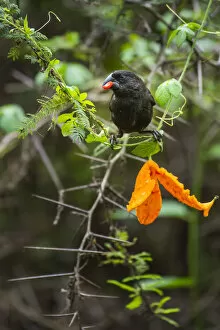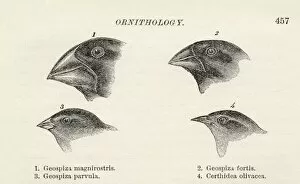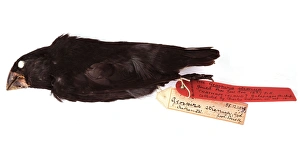Large Ground Finch Collection
The large ground finch, scientifically known as Geospiza magnirostris
All Professionally Made to Order for Quick Shipping
The large ground finch, scientifically known as Geospiza magnirostris, is a fascinating species that captivated the attention of renowned naturalist Charles Darwin during his voyage on HMS Beagle. These remarkable birds have beaks adapted to different diets, a characteristic observed by Darwin himself in September-October 1835 while exploring the Galapagos Islands in Ecuador. One captivating image showcases Darwin's large ground finch perched delicately on a wild cucumber, its primary source of sustenance. This pair of Geospiza Magnirostris beautifully illustrates the intricate relationship between these birds and their food sources. In his book "Journal of Researches, " also referred to as "Darwin's Journal of a Voyage Around the World, " published in 1890, Charles Darwin documented his awe-inspiring encounters with various finches inhabiting the Galapagos Islands. Among them were multiple sightings of Geospiza magnirostris - an iconic representation of adaptation and evolution. These stunning photographs capture the essence of this unique species: their robust bodies adorned with feathers ranging from earthy tones to vibrant hues. The large ground finches' most distinctive feature lies within their beaks – each specifically designed for consuming different types of food found across their habitat. Geospiza magnirostris has become synonymous with versatility and resilience due to its ability to adapt its diet according to available resources. Whether it be cracking tough seeds or feasting on succulent fruits, these ingenious creatures have mastered survival amidst ever-changing environments. As we marvel at these images showcasing Geospiza magnirostris in all its glory, let us reflect upon how nature continuously inspires us through its diversity and ingenuity. The large ground finch serves as a reminder that even seemingly small adaptations can lead to significant evolutionary advancements over time - a testament to both the power and beauty inherent in our natural world.





